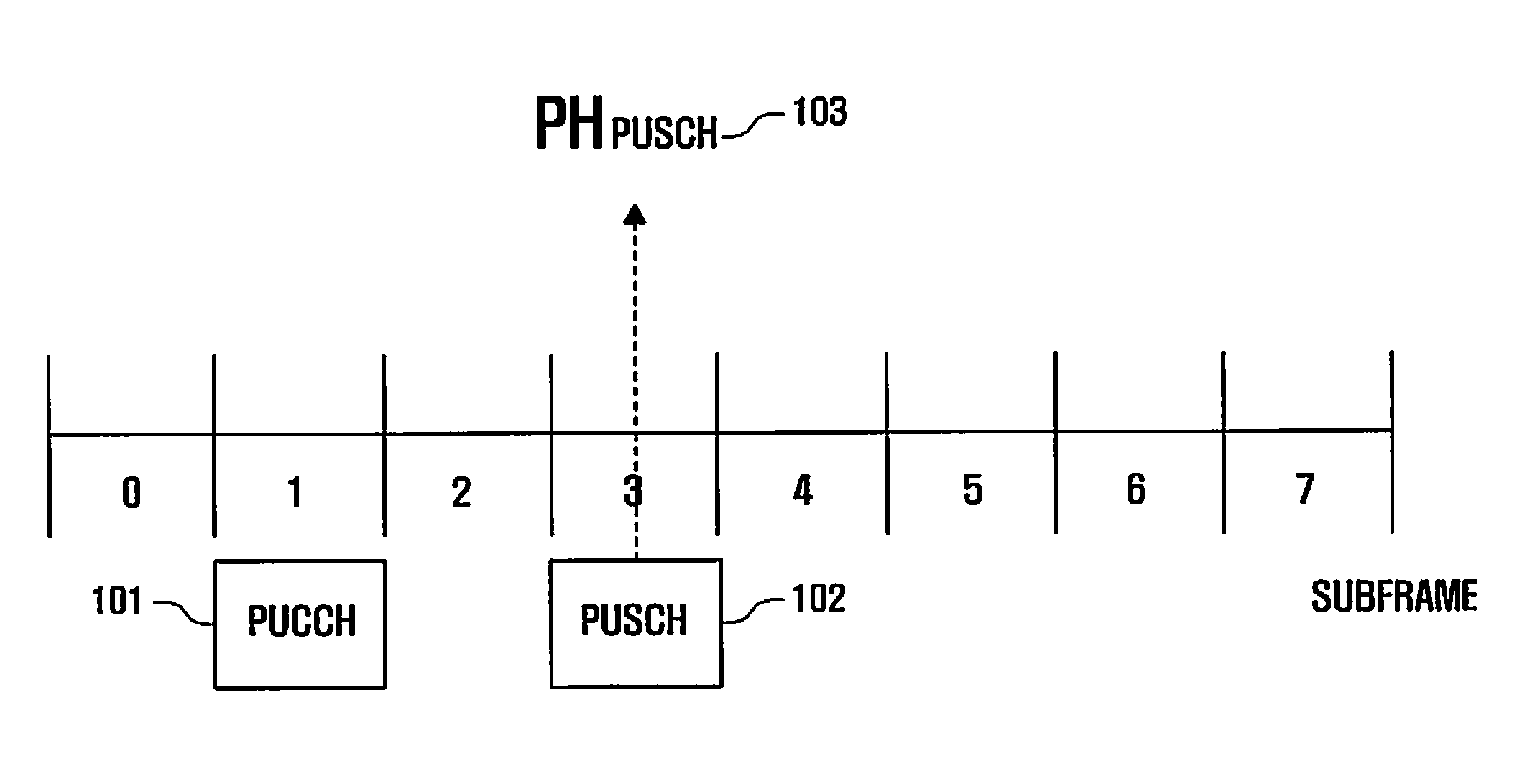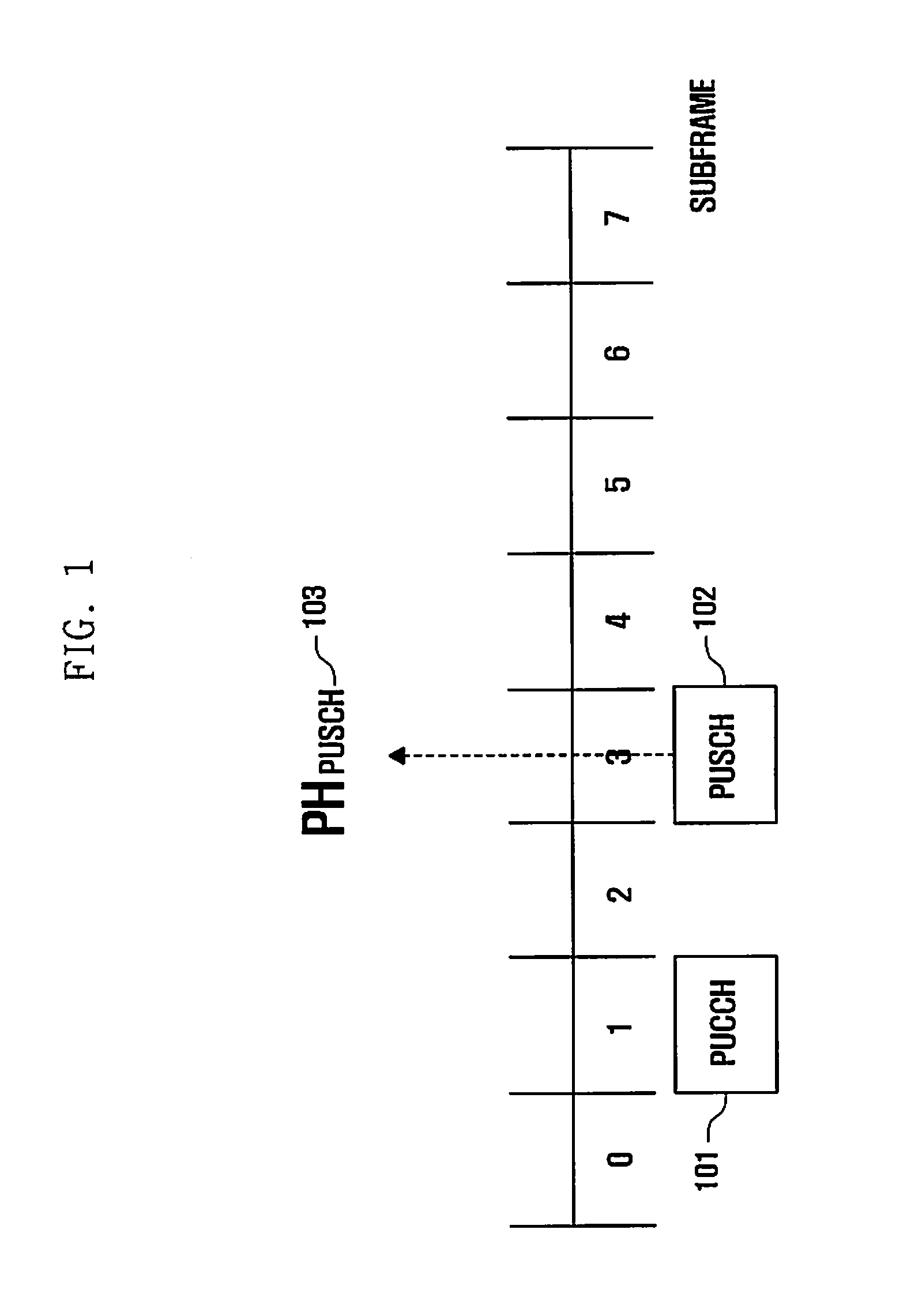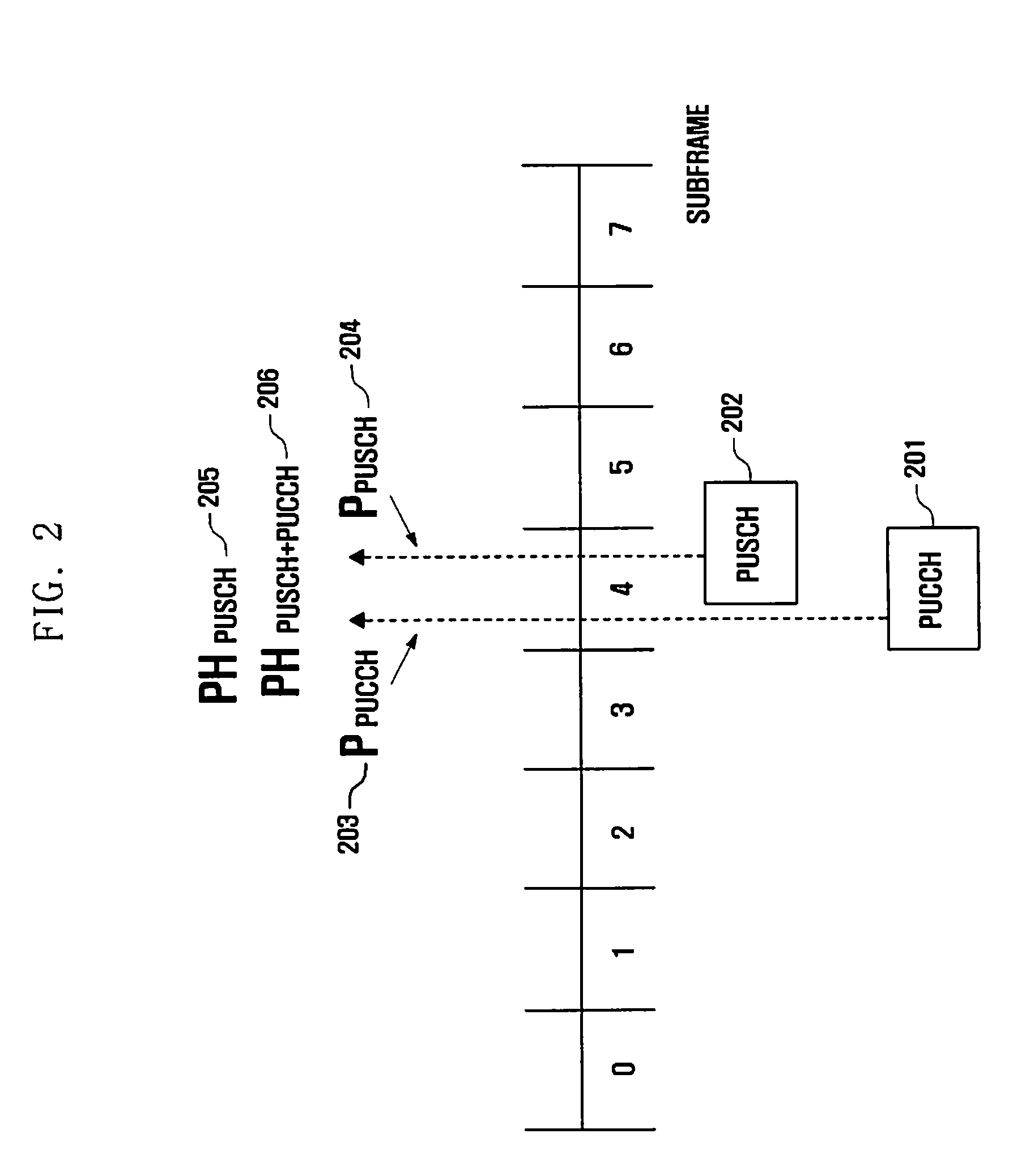Methods for power headroom reporting, resource allocation, and power control
- Summary
- Abstract
- Description
- Claims
- Application Information
AI Technical Summary
Benefits of technology
Problems solved by technology
Method used
Image
Examples
first embodiment
of the Present Invention
[0061]FIG. 2 is a diagram illustrating power headroom reporting according to the first embodiment of the present invention.
[0062]Referring to FIG. 2, in a case where the LTE-Advanced system allows transmissions over both PUSCH and PUCCH in the same subframe, in response to occurrence of an event requesting power headroom (PH) reporting, the mobile terminal may report PHPUSCH and PHPUSCH+PUCCH to the base station using Equation 12:
PHPUSCH+PUCCH(i)=PCMAX−PPUSCH(i)−PPUCCH(i)[dB]
PHPUSCH(i)=PCMAX−PPUSCH(i)[dB] (12)
[0063]Here, an event requesting power headroom reporting may correspond to reception of an external signal requesting power headroom reporting or detection of a predefined event requesting power headroom reporting, such as detection of a significant change in path-loss estimation, expiration of a preset timer value, or expiration of a preset period.
[0064]As in Equation 12, PHPUSCH+PUCCH 206 is given by subtracting the transmit power PPUSCH(i) 204 for PU...
second embodiment
of the Present Invention
[0084]According to the first embodiment of the present invention, when a PUCCH transmission is not present in subframe 4, the stored transmit power PPUCCH for the latest PUCCH transmission in an earlier subframe is utilized. For example, in FIG. 3, the transmit power for PUCCH transmission 301 in subframe 1 is used in subframe 4. However, h(nCQI, nHARQ) given by Equation 9 may have different values according to PUCCH formats. If the format expected by the base station is different from that actually used by the mobile terminal, a problem may arise with regard to power control. For example, the base station may expect to receive a PH report containing a h(nCQI, nHARQ) value calculated for format 1, 1a or 1b from the mobile terminal. However, the mobile terminal may fail to receive PDSCH (Physical Downlink Shared Channel) information from the base station. In this case, the mobile terminal may send a PH report containing a h(nCQI, nHARQ) value calculated for fo...
third embodiment
of the Present Invention
[0108]FIG. 9 is a diagram illustrating power headroom reporting according to a third embodiment of the present invention.
[0109]Referring to FIG. 9, when of transmitting two CodeWords (CW) CW #1 and CW #2, PHPUSCH+PUCCH(CW #1) and PHPUSCH+PUCCH(CW #2), the two codewords may be separately reported according to Equation 15:
PHPUSCH+PUCCH(i, CW #1)=PCMAX−PPUSCH(i, CW #1)−PPUCCH(i)[dB]
PHPUSCH(i, CW #1)=PCMAX−PPUSCH(i, CW #1)[dB]
PHPUSCH+PUCCH(i, CW #2)=PCMAX−PPUSCH(i, CW #2)−PPUCCH(i)[dB]
PHPUSCH(i, CW #2)=PCMAX−PPUSCH(i, CW #2)[dB] (15)
[0110]Power headroom reporting for each codeword may be necessary in the following case. When two codewords CW #1 and CW #2 to be transmitted are present, CW #1 may be in the process of retransmission while CW #2 has been successfully transmitted. In addition, when power control is performed independently for individual codewords, power headroom reporting for each codeword may be necessary.
[0111]Referring to FIG. 2, in the case of th...
PUM
 Login to View More
Login to View More Abstract
Description
Claims
Application Information
 Login to View More
Login to View More - R&D
- Intellectual Property
- Life Sciences
- Materials
- Tech Scout
- Unparalleled Data Quality
- Higher Quality Content
- 60% Fewer Hallucinations
Browse by: Latest US Patents, China's latest patents, Technical Efficacy Thesaurus, Application Domain, Technology Topic, Popular Technical Reports.
© 2025 PatSnap. All rights reserved.Legal|Privacy policy|Modern Slavery Act Transparency Statement|Sitemap|About US| Contact US: help@patsnap.com



